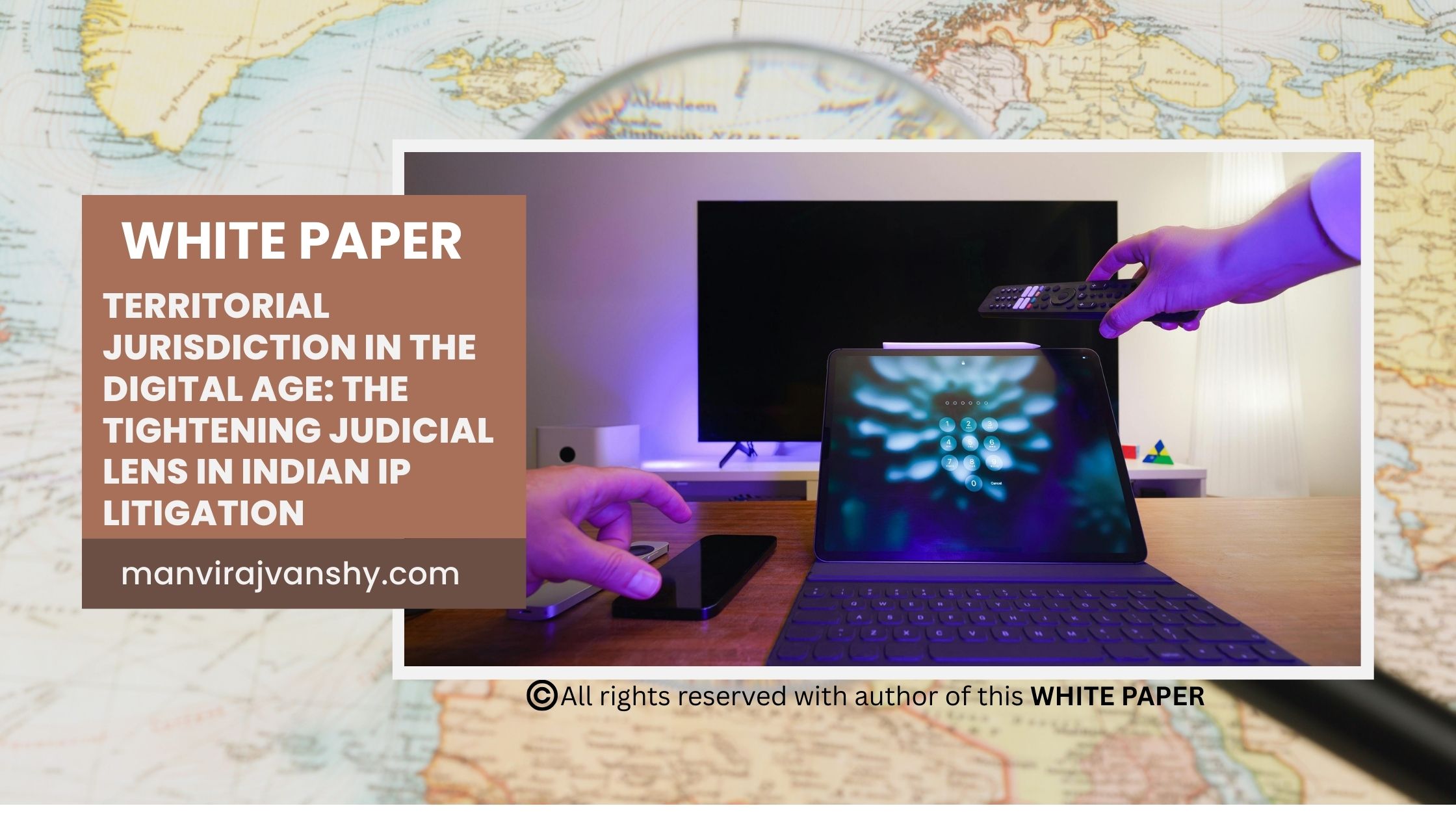Territorial Jurisdiction in the Digital Age: The Tightening Judicial Lens in Indian IP Litigation
Introduction
In the evolving jurisprudence of intellectual property disputes in India, the question of ubi jus ibi remedium—where there is a right, there is a remedy—has increasingly collided with the question of ubi forum—where shall the remedy be sought? The migration of commerce to the digital ether has disrupted traditional notions of territorial jurisdiction. What once depended on brick-and-mortar presence now often rests upon pixels, IP addresses, and digital footprints.
Indian courts, mindful of forum non conveniens and the dangers of forum-shopping, are sharpening their approach. Mere accessibility of a website, once considered sufficient, is now deemed inadequate simpliciter. The judiciary insists upon something more tangible—commercial targeting, transactional activity, or demonstrable harm within the chosen forum.
Statutory Framework
The architecture of jurisdiction in India rests upon three pillars:
- The Code of Civil Procedure, 1908 (CPC) — Section 20 mandates that suits be instituted where the defendant resides, carries on business, or where the cause of action, wholly or in part, arises.
- Special IP statutes — Section 134(2) of the Trade Marks Act, 1999 and Section 62(2) of the Copyright Act, 1957 grant plaintiffs an additional forum conveniens: where they themselves carry on business. Yet, as the Supreme Court clarified in Indian Performing Right Society Ltd. v. Sanjay Dalia, this indulgence cannot be stretched into an open licence for forum-shopping. Beneficium non datur nisi voluntas sit accipientis—a benefit must not be misused to the detriment of procedural order.
- Procedural correctives — Order VII Rules 10 and 11 of the CPC empower courts to return or reject plaints at the threshold when jurisdictional averments are hollow or contrived.
Jurisprudential Evolution
The Early Tide
In Exphar SA v. Eupharma Laboratories (2004), the Supreme Court recognised that IP statutes created an additional jurisdictional anchor. Plaintiffs quickly weaponised this, leading to a flood of suits filed in distant fora.
The Digital Disruption
The watershed came in Banyan Tree Holding v. Murali Krishna Reddy (Delhi High Court, 2009). The Court emphatically rejected the proposition that a passive website, accessible everywhere, conferred jurisdiction anywhere. It invoked the purposeful availment doctrine—actus non facit reum nisi mens sit rea—mere act (website accessibility) is not enough; the intent to target must be manifest.
The Refinement
Subsequent cases—Ultra Home Construction v. Purushottam Kumar and Indovax v. Merck Animal Health—tightened scrutiny. Courts began dissecting “trap transactions” and contrived invoices, wary of plaintiffs creating artificial causes of action.
The Contemporary Position
Recent rulings show an unmistakable trend:
- V-Guard Industries v. Sukan Raj Jain (2021) upheld jurisdiction where real e-commerce sales reached Delhi.
- Kohinoor Seed Fields v. Veda Seed Sciences (2025) returned a plaint where the plaintiff’s head office in Delhi could not cloak the absence of a cause of action.
- Vikrant Chemico v. Shri Gopal Engineering (2025) categorically held that mere listings on IndiaMART or a passive website do not suffice. Courts demanded proof of actual transactions or demonstrable targeting of customers in the forum.
The movement is clear: the judicial compass now points towards causa causans—the proximate cause of action—rather than causa sine qua non—a remote or manufactured one.
Doctrinal Tests Applied
- The Zippo sliding scale: from passive sites (no jurisdiction) to interactive commerce (jurisdiction sustained).
- The Calder “effects” test: jurisdiction where intentional acts cause foreseeable harm in the forum.
- The purposeful targeting standard: blending both, Indian courts now ask—did the defendant direct its mind and its business towards the forum?
Challenges Before Courts
Trap transactions: plaintiffs planting purchases to fabricate jurisdiction test judicial patience; fraus omnia corrumpit—fraud vitiates everything.
Marketplace opacity: platforms shield sellers under Section 79 IT Act, leaving courts to untangle whether the intermediary is passive or an active participant.
Multiplicity of suits: forum-shopping clogs dockets and risks conflicting decrees.
Authenticity of digital evidence: screenshots can be doctored; courts demand invoices, payment trails, and forensic certification.
Cross-border enforcement: orders against foreign defendants often founder on the rocks of service-of-process and recognition abroad.
Practical Consequences
For plaintiffs, the mandate is clear: allegans contraria non est audiendus—one who alleges must substantiate. A plaint must annex invoices, courier receipts, and payment records proving forum sales. A solitary screenshot will not survive judicial scrutiny.
For defendants, early applications under Order VII Rule 10 or 11 can be decisive. Intermediaries must vigilantly maintain safe-harbour compliance to avoid being tagged as “active participants.”
For courts, a delicate balance must be struck: to protect genuine rights-holders while guarding against the misuse of jurisdictional provisions as instruments of harassment.
CONCLUSION
Indian jurisprudence on territorial jurisdiction in IP disputes has reached a moment of maturity. The pendulum has swung from permissive accessibility to purposive targeting. The maxim sublato fundamento cadit opus—remove the foundation and the structure falls—aptly describes the fate of suits filed on the flimsy foundation of website accessibility alone.
Going forward, plaintiffs must invest in building evidentiary foundations before invoking a court’s jurisdiction. Defendants must be vigilant in exposing manufactured causes of action. Courts must continue their calibrated approach, ensuring that digital commerce does not become an excuse for digital forum-shopping.
In this tightening judicial lens lies the assurance that ubi jus ibi remedium remains a guiding star, but only in the forum that law and fact genuinely converge.

